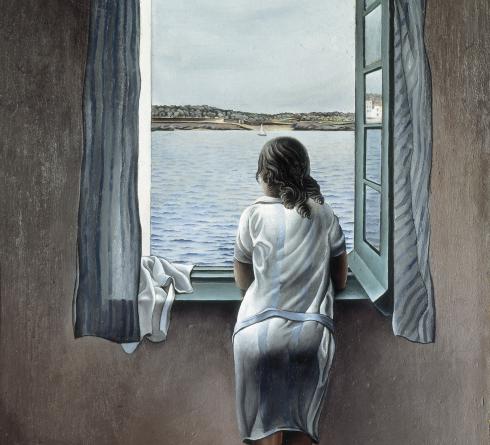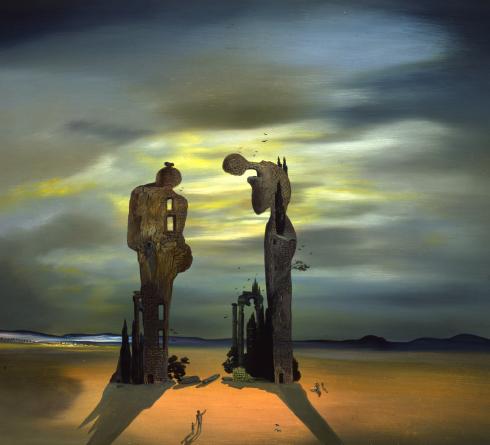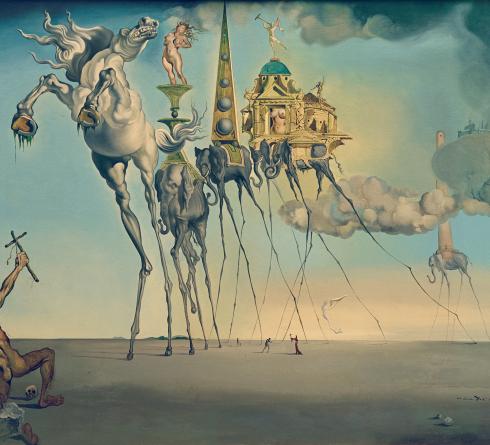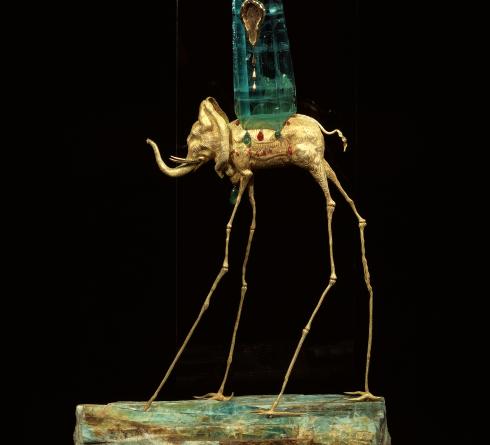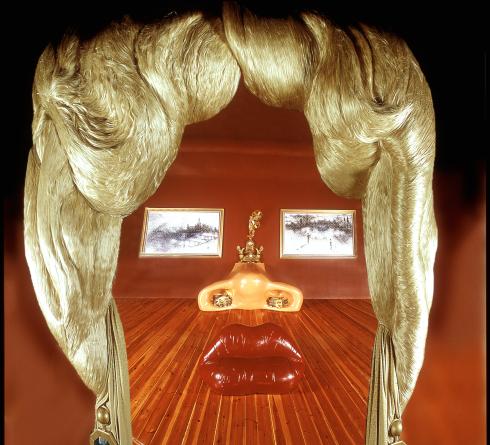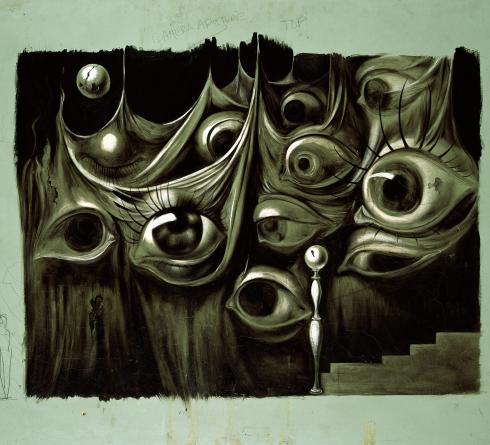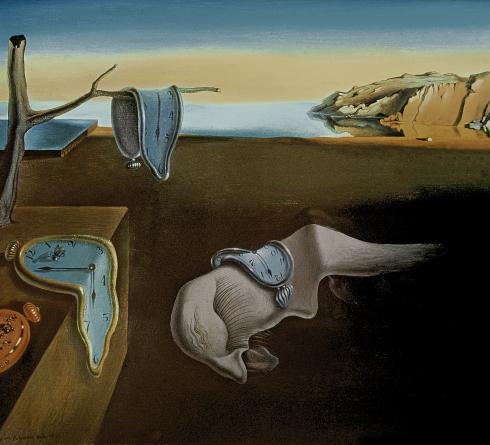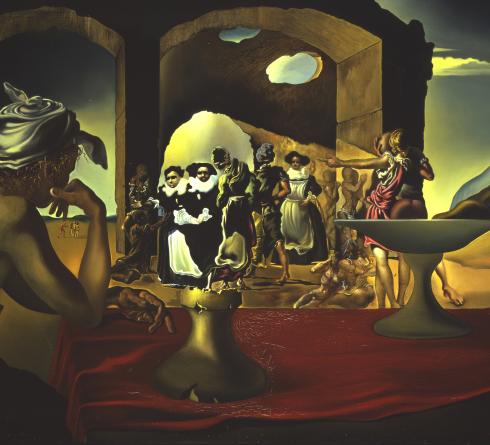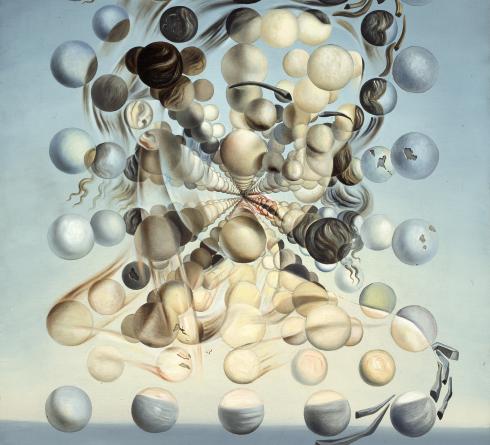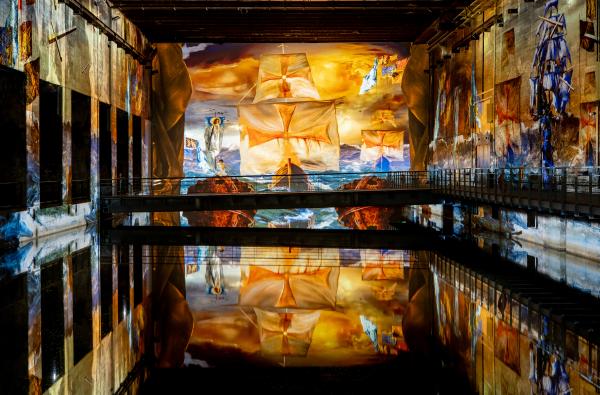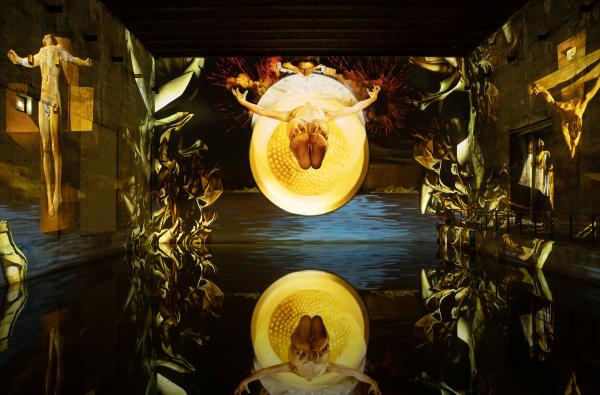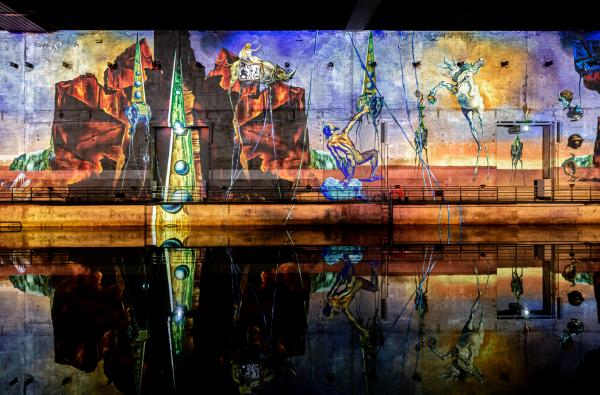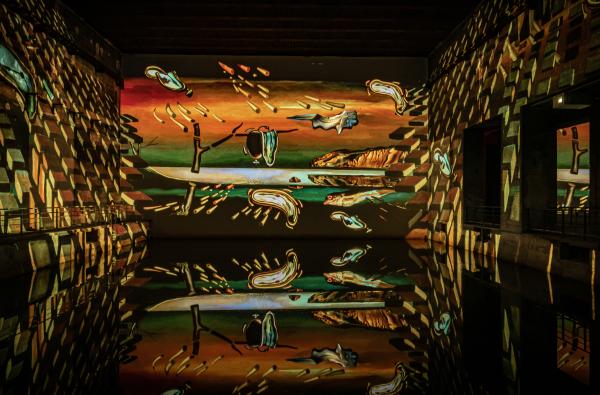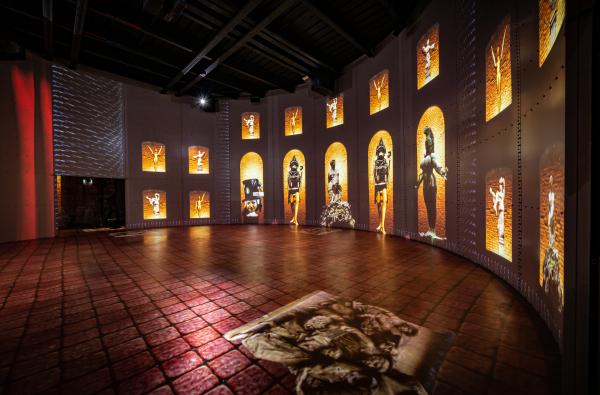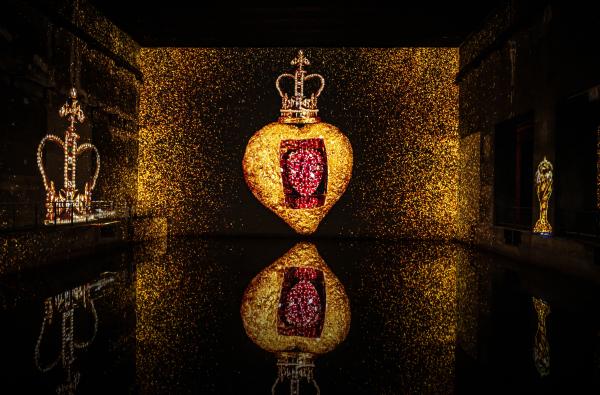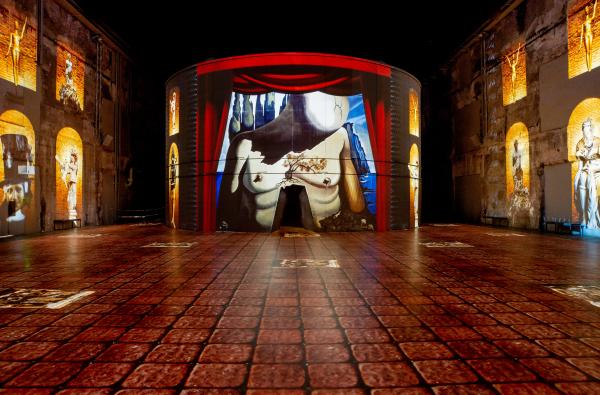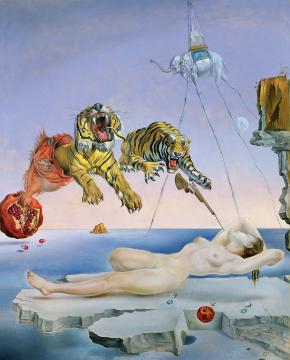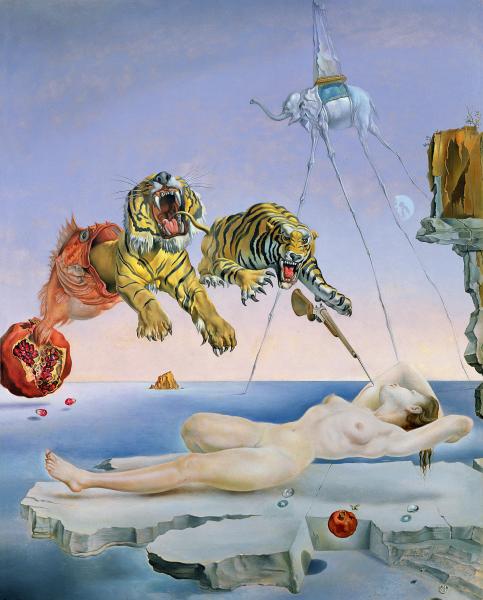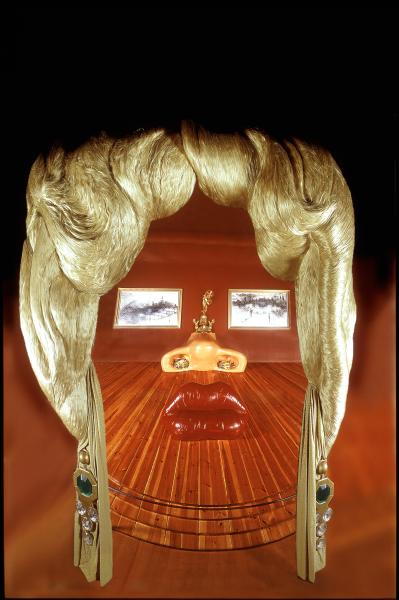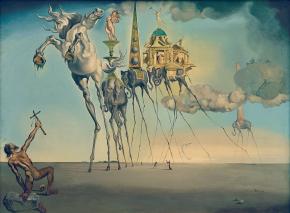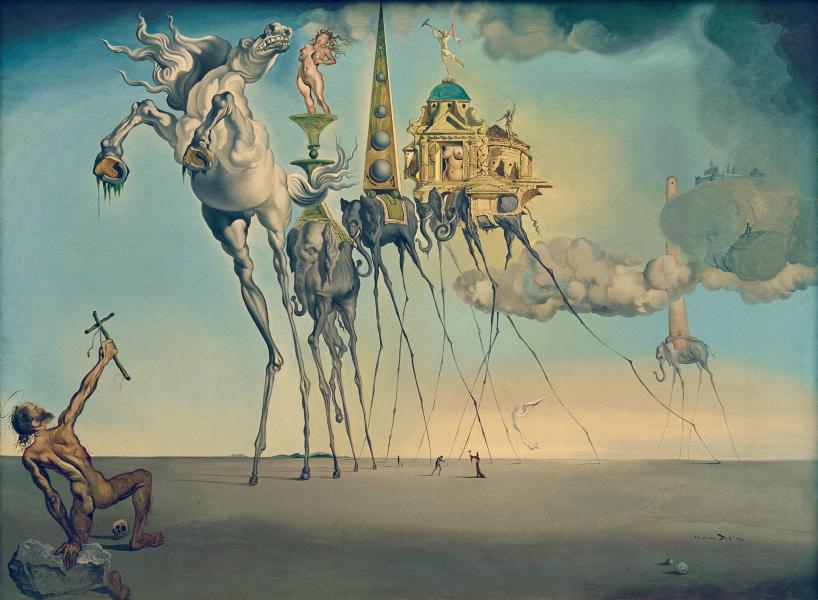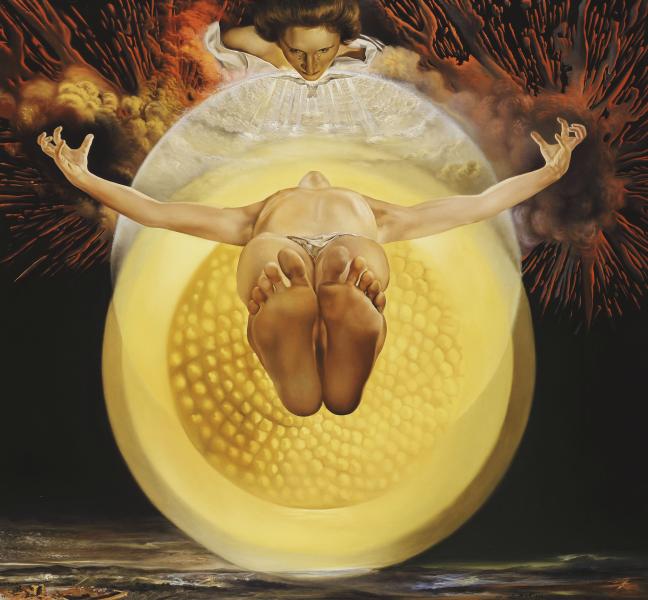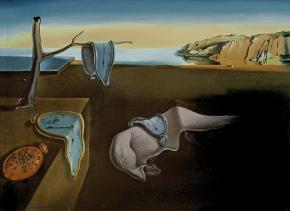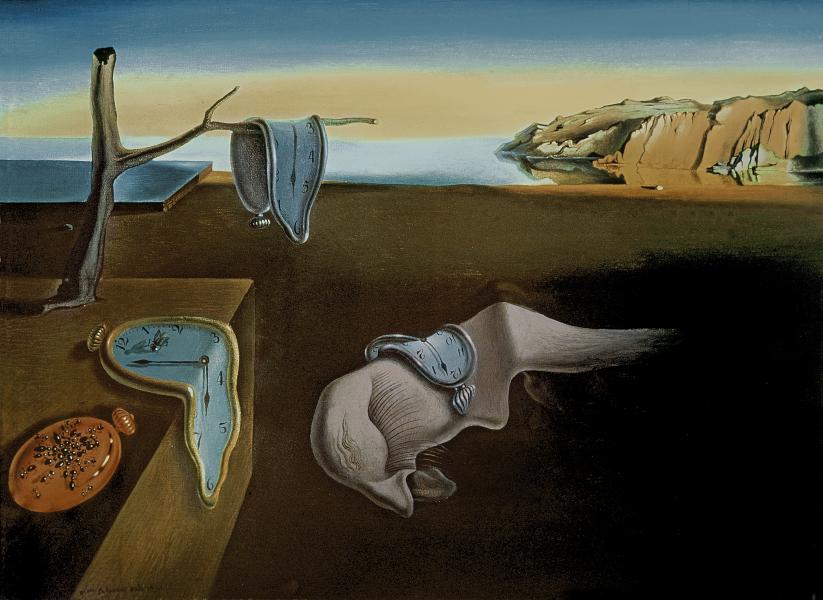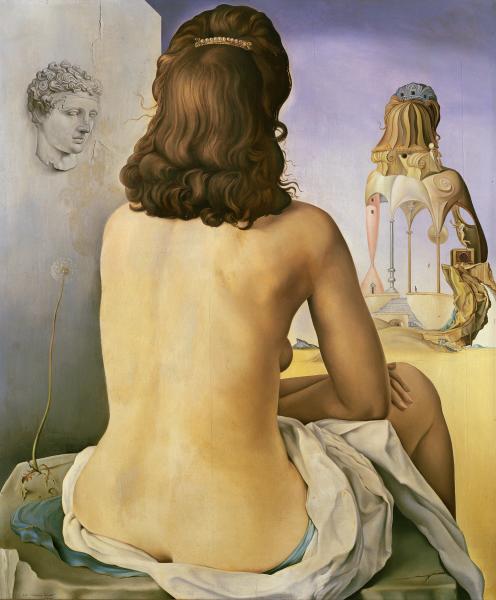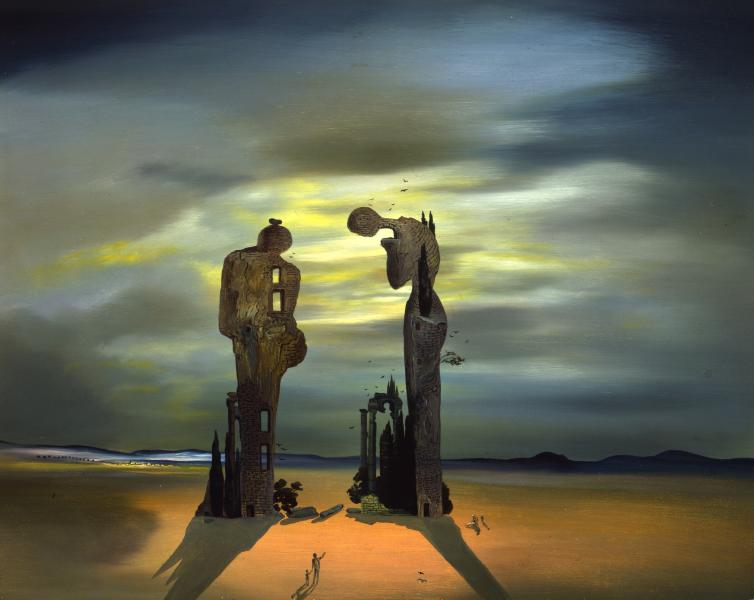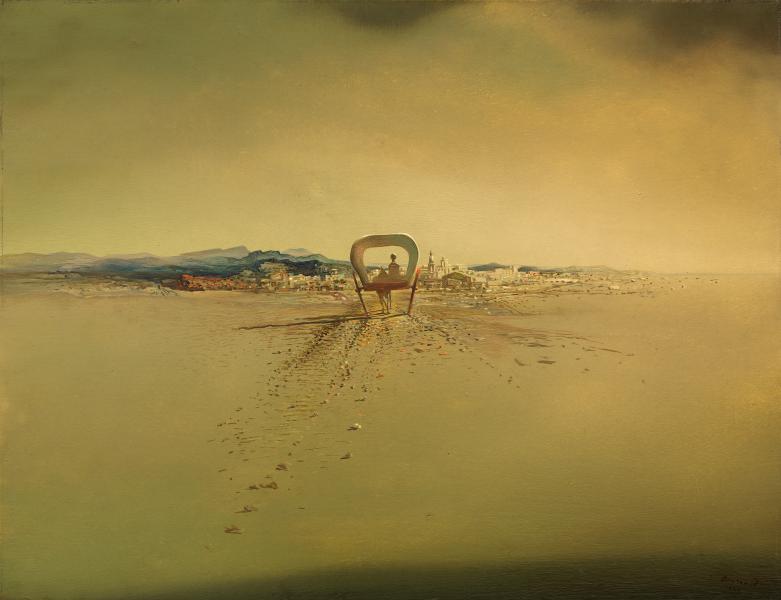From April 12 to 28: "From Vermeer to Van Gogh" from 10am to 2pm and "Tintin" from 2.10pm to 8pm.
Online booking strongly recommended at weekends, on public holidays and during school vacations. Please note that the Bassins are cold so bring something to cover up.
About the exhibition
Dalí, The Endless Enigma
Dalí (1904-1989)
listen to the playlist of the exhibition
Work of the month
Piéta, 1958
So, was Dalí a religious painter? Yes, he was. As of the 1940s, he painted hundreds of Christs, Madonnas, saints, and angels in his canvases. However, this religious work has remained largely unknown. In the collective imagination the Spanish painter is associated with his soft watches and newsworthy antics or countless commercial collaborations earned him the mocking nickmane of Avida Dollars given by André Breton - an anagram formed from the letters of his name. With his gift for repartee, Dalí said: ‘Since he has called me Avida Dollars, gold has begun to rain down on my head, like a divine, monotonous diarrhoea’.
Salvador Dalí, Pietà, 1958, oil on canvas, 115 x 123 cm, Collection Pérez Simón, Mexique; © Salvador Dalí, Fundació Gala-Salvador Dalí, ADAGP 2023 – Photo © Christie’s Images/Bridgeman Images
Key works
Explore more

Download our App
The application, available free of charge on iOS and Android, gives commentaries on the works of our current exhibitions. Discover through original anecdotes 30 major works of the exhibition "Dalí, the Endless Enigma".
Discover also the exhibitions "Chagall, Paris – New York" in the Atelier des Lumières (Paris) et au Hall des Lumières (New York), "From Vermeer to Van Gogh, the Dutch Masters" in Carrières des Lumières (Les Baux-de-Provence) and "Klimt, Gold in Motion" in Phoenix des Lumières (Dortmund).
Download on the App Store Download on Google Play

